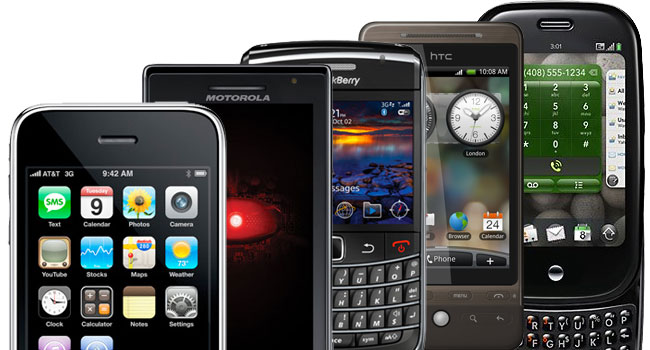The Smartphone and the Mobile Revolution
by Ian Uymatiao
Great advances in engineering have allowed us to iterate on a computer’s capabilities, and at the same time shrink them to ever so smaller form factors. What were once humongous monsters of machines that required large amounts of cooling and maintenance to keep them operational has been shrunk to a size that can fit in the palm of a hand, and can perform an extraordinary number of tasks without making a sound. Today, we call this tiny machine the smartphone, and while innovation will continue to shrink the computer to even smaller sizes, the smartphone today represents the best of technology.
In many ways, it’s actually unfair to call these devices ‘smartphones’. They are definitely something greater than phones that are smart. That definition may have been accurate half a decade ago, when they were regarded as cellphones that happened to do basic email and web browsing. In recent years, however, the smartphone industry as a whole has gone through a massive upheaval, thanks to devices like the iPhone and the Samsung Galaxy series. Now we have these ‘mobile computers’, capable of playing 1080p video without hiccups, browsing the web at blazing speeds, capturing pictures and videos that rival those of traditional point-and-shoot cameras, updating Twitter and Facebook with ease, running games that boast console-like graphics, and consolidating calendars, contacts, email, and notes into a sleek, mobile package.

Source: aptito.com
It’s probably not a hyperbole to say that the redefined smartphone was one of the biggest tech innovations of the previous decade. It took almost everything we used to do exclusively on a PC, and enabled us to do them on a machine that fits in the palm of a hand. It still hasn’t replaced the PC in some areas, such as long form writing, hardcore gaming, programming, and system administration, but it looks like we are approaching a future where, for most people, the traditional PC is no longer a needed part of our digital life.
With that said, what does that mean for those of us who still hold dearly to our laptops and desktops? Even today, the PC remains an indispensable tool for productivity for a lot of people. But these transitions also take time. The PC did not replace the mainframe overnight, and I have serious doubt that the smartphone transition will be any different. Besides, the mainframe computer still managed to hang around even after all these years; surely the PC will still be with us, right? That, honestly, is a question I have a hard time answering.

Source: nokia.com
Ten years ago, the vast majority of us were still mainly interacting with desktops, and laptops still seemed like a distant pipe dream. Today, pretty much all of us carry a laptop around, and the smartphone has done nicely as a secondary internet and communication device. But are we really going to be interacting with our devices in this manner by 2022? It’s not hard to imagine that we will be interacting with computers in a very different way by then, but what role will the desktops and laptops of today play by that time? Again, it’s hard to say.
Nevertheless, we are living in exciting times, in another pivotal moment for the evolution of the computer. Even in its infancy, the smartphone has already managed to spur innovation in numerous fields, such as microprocessing, networking, power efficiency, software development, and user experience. And the best part is that it doesn’t seem like it will slow down anytime soon. I have little doubt that the smartphone will represent the next step in the grand evolution of the computer. However, no matter what direction these next few years will take us, it is definitely a great time to be a lover of technology.

Source: engadget.com


Comments